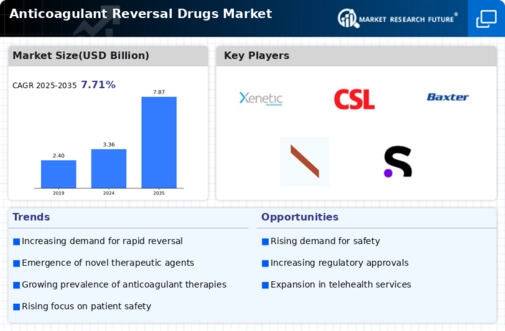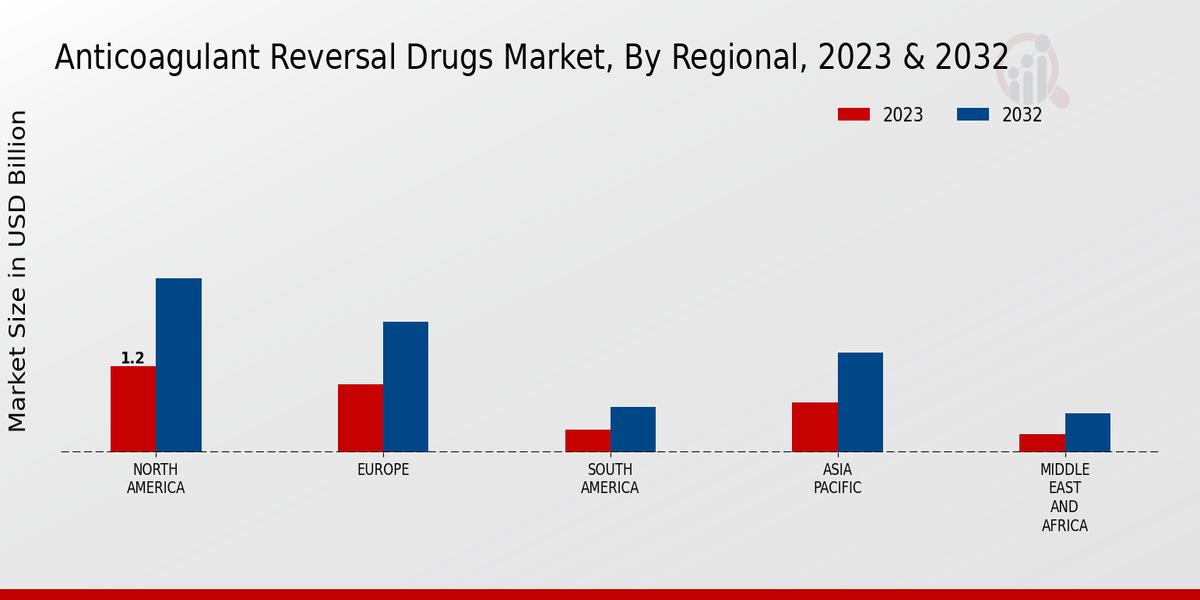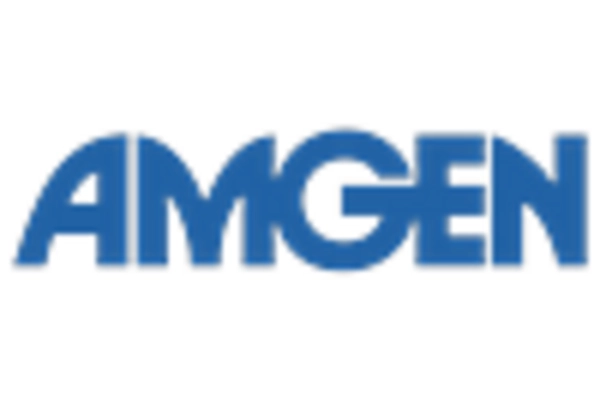Rising Geriatric Population
The increasing geriatric population is a significant driver for the Anticoagulant Reversal Drugs Market. Older adults are more likely to be prescribed anticoagulants due to age-related health conditions, which in turn raises the risk of bleeding complications. Data indicates that individuals aged 65 and older account for a substantial proportion of anticoagulant prescriptions, leading to a heightened demand for effective reversal agents. As the global population continues to age, the need for anticoagulant reversal drugs is expected to grow correspondingly. This demographic shift presents both challenges and opportunities for the market, as healthcare systems strive to ensure safe anticoagulant management for this vulnerable population.
Regulatory Support for Reversal Agents
Regulatory bodies are playing a pivotal role in shaping the Anticoagulant Reversal Drugs Market through the approval and endorsement of new reversal agents. The expedited review processes for innovative drugs, particularly those that address unmet medical needs, have facilitated quicker access to essential reversal therapies. For instance, the approval of andexanet alfa by regulatory agencies has set a precedent for the introduction of additional agents. This regulatory support not only enhances market confidence but also encourages pharmaceutical companies to invest in the development of new reversal drugs. As a result, the market is likely to witness a surge in product offerings, catering to the diverse needs of healthcare providers and patients.
Advancements in Pharmaceutical Research
Innovations in pharmaceutical research are propelling the Anticoagulant Reversal Drugs Market forward. The development of novel reversal agents, such as andexanet alfa and ciraparantag, showcases the industry's commitment to addressing the limitations of existing treatments. These advancements not only improve the efficacy of reversal agents but also expand their applicability across various anticoagulant classes. Market data suggests that the introduction of these new agents could potentially increase the market size by over 30 percent in the coming years. As healthcare systems increasingly prioritize patient outcomes, the focus on research and development in this sector is likely to intensify, further driving market growth.
Growing Awareness of Anticoagulant Management
There is a growing awareness among healthcare professionals and patients regarding the importance of effective anticoagulant management, which significantly influences the Anticoagulant Reversal Drugs Market. Educational initiatives and clinical guidelines emphasize the need for timely reversal of anticoagulants in emergency situations. This heightened awareness is reflected in the increasing number of training programs and workshops aimed at healthcare providers. As a result, the demand for reversal drugs is expected to rise, as practitioners become more adept at recognizing the need for these agents. Furthermore, patient education on the risks associated with anticoagulant therapy is likely to contribute to increased utilization of reversal drugs.
Increasing Incidence of Anticoagulant-Related Complications
The rising incidence of complications associated with anticoagulant therapies is a notable driver for the Anticoagulant Reversal Drugs Market. As more patients are prescribed anticoagulants for conditions such as atrial fibrillation and venous thromboembolism, the likelihood of adverse events, including bleeding, escalates. Reports indicate that approximately 15 to 20 percent of patients on anticoagulants experience bleeding complications, necessitating the use of reversal agents. This trend underscores the critical need for effective reversal drugs, as healthcare providers seek to mitigate risks and enhance patient safety. Consequently, the demand for anticoagulant reversal drugs is expected to grow, reflecting a proactive approach to managing anticoagulant therapy and its associated risks.


















Leave a Comment